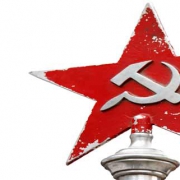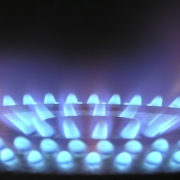Use LNG or lose money – the example of Iran
Let me give you some figures straight. Iran consumes a little more than 30 billion liters of diesel fuel per year to keep its economy chugging on (pulled that from Google). I am not even talking about gasoline here. Because much of the same rationale I will be unfolding in this post also holds to gasoline and any other hydrocarbon fuel.
However, at the same time, it flares about 15 bcm of natural gas every year (again one of those Google figures). That’s about one-third of the diesel consumption. Moreover, this would also go a long way to making the Iranian economy a lot more resilient and greener.
But as so very often, first things first.
Anybody observing the LNG world for a little while will be forgiven to think sending as much of the cold stuff Asia’s way as one can, would be a great idea. On the face of things, Asia pays the highest prices. This is – at least to the one looking at things superficially – a flawless rationale.
How can it then be that exporting LNG – even to Asia – should be a money-losing business? For certain countries it is. Let us home in on Iran as one of the very typical examples.
Iran has harbored LNG ambitions since the Seventies. Much like the nuclear reactor, developing a viable LNG project is part of the Iranian national ambitions. It has become way more important than the energetic or commercial value itself. It has become a symbol. However, does it make commercial sense?
I just told you above about the 30 billion liters of diesel fuel a year Iran gobbles up. The figure itself is irrelevant – just keep in mind that they consume an awful lot of fuel.
The same is true for other fuels such as Kerosene or Gasoline but we are going to stick with the Diesel example just for the sake of simplicity.
The 15 billion m3 flaring figure again is an official one and with oil producers regularly cheating on this count, we can safely assume that it is a lot more. In the end, most companies are penalized for flaring so it is not hard to imagine that bookkeeping on it is creative. Again – let us stick with the official figure for the moment.
This gas represents a fuel value of almost 11 billion liters of Diesel Fuel Equivalent or about one-third of the National Iranian Diesel consumption.
At the same time, Iran imports about 40% of its refined fuel needs (this is again one of those figures Uncle Google has thrown on me and I have not dug into the exact split between gasoline and diesel yet). Let us assume that the 40% is true for diesel and all other fuels respectively.
This means that Iran flares almost as much Diesel Fuel Equivalent in Natural Gas as it imports.
Those imports, on the other side, are very expensive for Iran. Iran still subsidizes fuels its citizens fill into their vehicles and machines buying some social peace. This means that every liter of diesel sold in Iran makes the country less rich or is a lost opportunity to make some cash by selling refined products.
In the case of imported fuels, Iran needs to pay whatever delta exists between the price of the fuel on the international market and the price it extracts from customers at the pump. The fact that some are abusing this situation to buy cheap fuel in Iran and resell it very expensively in neighboring markets just makes matters worse.
But Iran also produces diesel fuel in its refineries which theoretically could be sold for a profit abroad. This is pure theory as Iran is not self-sufficient in fuel production so it needs all it can produce for itself. That’s money lost.
If now, Iran started converting its flare gas into LNG that would be used to replace diesel, the country would start lowering the need to import diesel and potentially even one day produce enough LNG for fuelling its economy, and diesel imports become a thing of the past. Who would – 10 years ago – have dared to suggest that North America might be energy-independent one day?
Plus, with the official flare gas count, we are not even scratching the surface. There is way more stranded gas in Iran than what is being flared today and as I said, I would assume the real flaring count to be much higher than the figures we get from the internet.
This means that substituting Diesel for LNG would go a long way to ending all fuel imports into Persia and as a side effect; it would make Iran a much cleaner country. The Iranian government has recognized air pollution to be one of the most serious issues for Iranian society.
LNG is a very clean fuel that does not even produce most of the nasty stuff that fumes from a diesel engine exhaust shaft and I am not talking about CO2 here. There is much more danger as readers of this blog are all well aware of.
How can it be done? Most of the flare gas sites are remote plus they are remote from each other and they only provide small amounts of gas at every single site. Collecting the gas to bring it to one single spot where it could be treated and liquefied in one of the monster plants would be a colossal undertaking. In addition, it would make the gas way too expensive for liquefaction and use as a fuel.
Small-scale LNG treatment and liquefaction is much more suitable as it is quick to implement, safe to operate, and technologically very mature. A mesh-like system of small liquefiers, storage, and distribution depots, as well as methods to transport the LNG (trailer trucks, rail, or even small barges), would go a long way to making it happen. Moreover, LNG as a fuel can be introduced gradually, in little steps, enabling the project to learn from mistakes on the go and improve. And also enables the people and the country to get used to this odorless, non-toxic, and almost green cryo fuel.
Moreover, there would be another hidden benefit to the economy. The practice of hoarding cheap fuel and reselling it in neighboring countries would be heavily dented as there is no LNG market to speak of in those countries. Useless to bring the stuff there then. Unless of course, they adopt the same principles outlined in this post themselves. Because Iran is just a perfect example of what should hold for many oil producers.
If Iran becomes an LNG exporter and at the same time buys diesel fuel from international markets at international rates, it throws money out of the window and loses a perfect opportunity to vastly improve its citizen’s lives.
Maybe we see an emerging Green Middle East, which prefers to export oil rather than LNG as it uses it for its economies. A couple of other countries on Earth have already embarked on this journey to cheaper and cleaner fuels. Will Iran join them?


















Leave a Reply
Want to join the discussion?Feel free to contribute!